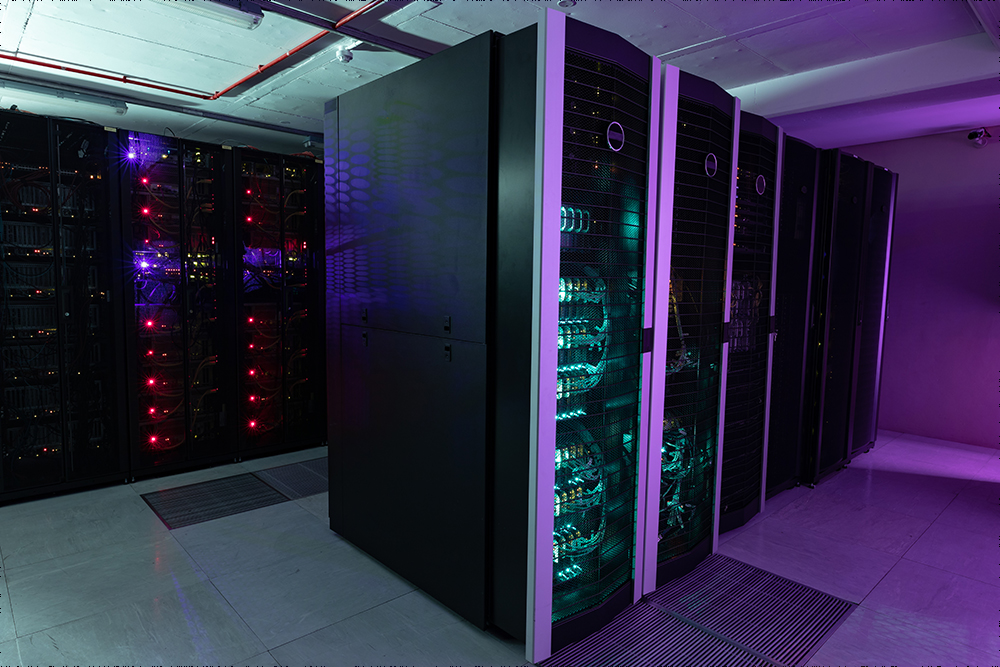LogicEra FREE proof of concept gives you a sneak peek of what the future holds for you with cloud migration.
Get in TouchOctober 13, 2022 Blog
The Rise of Cloud Computing in the UAE

The past decade has witnessed an exponential increase in the use of cloud computing in the UAE region and this growth is seeing an upward trend in the present too. Almost every sector in the UAE is utilizing one or more cloud computing methods in its day-to-day operations. With no business remaining immune to this trend, the UAE Cloud Computing market is estimated to grow at a CAGR of 38.2% from the year 2020 to 2027, as revealed by GMI Research’s latest report.
In this post, we will have a look at a few factors that have been and that may be driving this growth in the future too. However, let us first have a look at the UAE cloud computing market segmentation and the key developments that have taken place in the region that impacts this growth as well.
UAE Cloud Computing Market Segmentation:
By Service Model:
- Infrastructure as a Service
- Platform as a Service
- Software as a Service
By Deployment Model:
- Public Cloud
- Private Cloud
- Hybrid Cloud
By Organization Size:
- Small and Medium-Sized Enterprises
- Large Enterprises
By Workload:
- Database Management
- Integration and Orchestration
- Storage, Backup, and Disaster Recovery
- Business Analytics
- Enterprise Resource Management
- Application Development and Testing
- Collaboration and Content Management
By Industry Vertical:
- IT and Telecommunications
- Healthcare and Life Sciences
- Government and Public Sector
- Manufacturing
- Media and Entertainment
- Energy and Utilities
- Retail and Consumer Goods
- Banking, Financial Services, and Insurance
- Others
Cloud Computing Key Developments in the UAE
Here are the main cloud computing developments that have taken place in the UAE in reverse chronological order:
Jan 2020: IBM opened two data centers in UAE, one in Dubai and one in Abu Dhabi.
Jul 2019: Amazon Web Service launched three data centers in Bahrain and UAE.
Jan 2019: Microsoft started offering two regional cloud services from its new data centers in Dubai and Abu Dhabi.
Factors Driving the Growth of Cloud Computing in the UAE
1. The Launch of New Data Centers in the Region by different Cloud Services Providers (CSPs)
Of course! Different CSPs launching their data centers in the region are driving the growth of cloud computing in the region as businesses are more comfortable getting onto the cloud bandwagon when the data centers are locally located.
2. Government Initiatives
The UAE government has launched several initiatives in the region that include:
- National Innovation Strategy
- TRA Vision
- UAE Vision 2021, Dubai Smart City, and Abu Dhabi Vision 2030
While on the one hand, the National Innovation Strategy is aimed at developing a culture of innovation among organizations and individuals, the TRA Vision is centered on promoting electronic transformation and encouraging innovation. At the same time, the UAE Vision 2021, Dubai Smart City, and Abu Dhabi Vision 2030 are focused on accelerating the demand for real-time operations for the transformation of public services & experience. All these initiatives are boosting and will boost the usage of cloud computing in the region.
3. Data Value Extraction Capabilities of the Cloud
The demand for cloud computing in the UAE region is consistently growing and one of the key drivers of this growth is that the cloud helps you extract data value using advanced technologies such as blockchain and Artificial Intelligence (AI). It is all related. The more data gets generated on website and mobile applications and the more you need to reduce your Capital Expenditure (CAPEX) & Operational Expenditure (OPEX), the more you need technologies like Artificial Intelligence (AI) and Machine Learning (ML). And, the more you need to use such technologies, the more you need the help of cloud computing.
4. The Hybrid Cloud Need
Several industries are moving to the hybrid cloud in the UAE region, including mainly Small & Medium Enterprises (SMEs). The main reason behind it is the expanding business, resource mobility, and the increasing application of cloud migration. According to the GMI report, the hybrid cloud segment is estimated to grow at a higher CAGR during the forecast period due to the increasing adoption of hybrid cloud in several industries. Many CSPs in the region have launched different cloud services that will capture the shifting demand of the end-users.
What Else!
Well! Apart from the above mentioned factors, a few things that are driving the growth of cloud computing in the UAE region are:
- High flexibility
- User-friendliness
- High scalability
- Cost-effectiveness
- Pay-for-what-you-use payment models, and so on.
Wrap Up
So, in this post, we discussed the UAE cloud computing market segmentation, key developments, and the key factors driving its growth. We talked about how cloud computing in the UAE region has grown to date and will grow in the future. One thing that you should always keep in mind is that cloud computing delivers on-demand computing services, including a server, storage, database analytics, software, and intelligence through the internet. It eliminates capital expenses as you do not need to purchase expensive hardware or software. Not just that it improves the overall productivity and reinforces the security by protecting the infrastructure, applications, and data from potential threats.